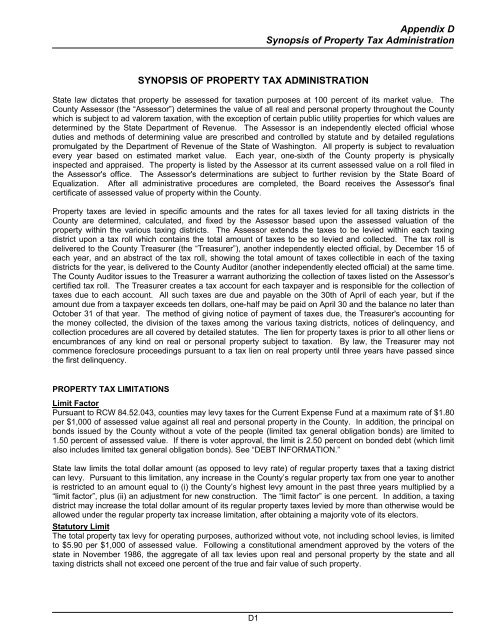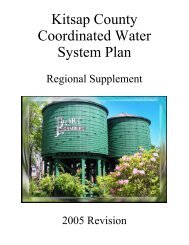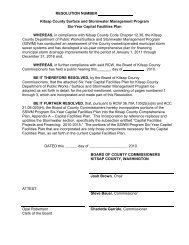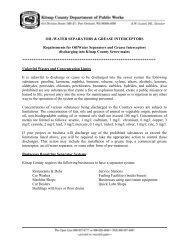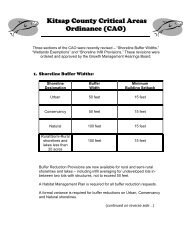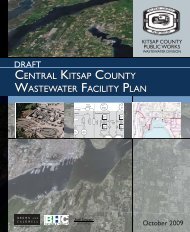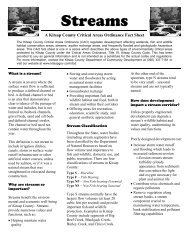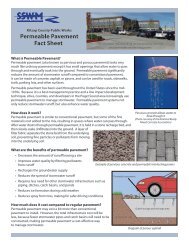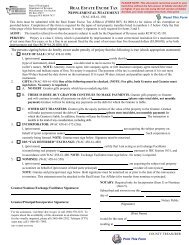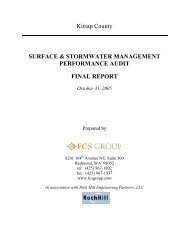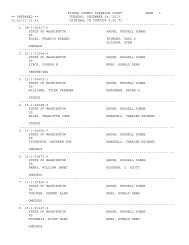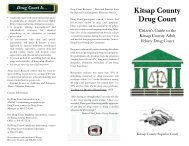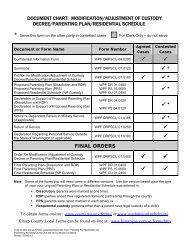2008 Budget Book - Kitsap County Government
2008 Budget Book - Kitsap County Government
2008 Budget Book - Kitsap County Government
Create successful ePaper yourself
Turn your PDF publications into a flip-book with our unique Google optimized e-Paper software.
Appendix D<br />
Synopsis of Property Tax Administration<br />
SYNOPSIS OF PROPERTY TAX ADMINISTRATION<br />
State law dictates that property be assessed for taxation purposes at 100 percent of its market value. The<br />
<strong>County</strong> Assessor (the “Assessor”) determines the value of all real and personal property throughout the <strong>County</strong><br />
which is subject to ad valorem taxation, with the exception of certain public utility properties for which values are<br />
determined by the State Department of Revenue. The Assessor is an independently elected official whose<br />
duties and methods of determining value are prescribed and controlled by statute and by detailed regulations<br />
promulgated by the Department of Revenue of the State of Washington. All property is subject to revaluation<br />
every year based on estimated market value. Each year, one-sixth of the <strong>County</strong> property is physically<br />
inspected and appraised. The property is listed by the Assessor at its current assessed value on a roll filed in<br />
the Assessor's office. The Assessor's determinations are subject to further revision by the State Board of<br />
Equalization. After all administrative procedures are completed, the Board receives the Assessor's final<br />
certificate of assessed value of property within the <strong>County</strong>.<br />
Property taxes are levied in specific amounts and the rates for all taxes levied for all taxing districts in the<br />
<strong>County</strong> are determined, calculated, and fixed by the Assessor based upon the assessed valuation of the<br />
property within the various taxing districts. The Assessor extends the taxes to be levied within each taxing<br />
district upon a tax roll which contains the total amount of taxes to be so levied and collected. The tax roll is<br />
delivered to the <strong>County</strong> Treasurer (the “Treasurer”), another independently elected official, by December 15 of<br />
each year, and an abstract of the tax roll, showing the total amount of taxes collectible in each of the taxing<br />
districts for the year, is delivered to the <strong>County</strong> Auditor (another independently elected official) at the same time.<br />
The <strong>County</strong> Auditor issues to the Treasurer a warrant authorizing the collection of taxes listed on the Assessor’s<br />
certified tax roll. The Treasurer creates a tax account for each taxpayer and is responsible for the collection of<br />
taxes due to each account. All such taxes are due and payable on the 30th of April of each year, but if the<br />
amount due from a taxpayer exceeds ten dollars, one-half may be paid on April 30 and the balance no later than<br />
October 31 of that year. The method of giving notice of payment of taxes due, the Treasurer's accounting for<br />
the money collected, the division of the taxes among the various taxing districts, notices of delinquency, and<br />
collection procedures are all covered by detailed statutes. The lien for property taxes is prior to all other liens or<br />
encumbrances of any kind on real or personal property subject to taxation. By law, the Treasurer may not<br />
commence foreclosure proceedings pursuant to a tax lien on real property until three years have passed since<br />
the first delinquency.<br />
PROPERTY TAX LIMITATIONS<br />
Limit Factor<br />
Pursuant to RCW 84.52.043, counties may levy taxes for the Current Expense Fund at a maximum rate of $1.80<br />
per $1,000 of assessed value against all real and personal property in the <strong>County</strong>. In addition, the principal on<br />
bonds issued by the <strong>County</strong> without a vote of the people (limited tax general obligation bonds) are limited to<br />
1.50 percent of assessed value. If there is voter approval, the limit is 2.50 percent on bonded debt (which limit<br />
also includes limited tax general obligation bonds). See “DEBT INFORMATION.”<br />
State law limits the total dollar amount (as opposed to levy rate) of regular property taxes that a taxing district<br />
can levy. Pursuant to this limitation, any increase in the <strong>County</strong>’s regular property tax from one year to another<br />
is restricted to an amount equal to (i) the <strong>County</strong>’s highest levy amount in the past three years multiplied by a<br />
“limit factor”, plus (ii) an adjustment for new construction. The “limit factor” is one percent. In addition, a taxing<br />
district may increase the total dollar amount of its regular property taxes levied by more than otherwise would be<br />
allowed under the regular property tax increase limitation, after obtaining a majority vote of its electors.<br />
Statutory Limit<br />
The total property tax levy for operating purposes, authorized without vote, not including school levies, is limited<br />
to $5.90 per $1,000 of assessed value. Following a constitutional amendment approved by the voters of the<br />
state in November 1986, the aggregate of all tax levies upon real and personal property by the state and all<br />
taxing districts shall not exceed one percent of the true and fair value of such property.<br />
D1


